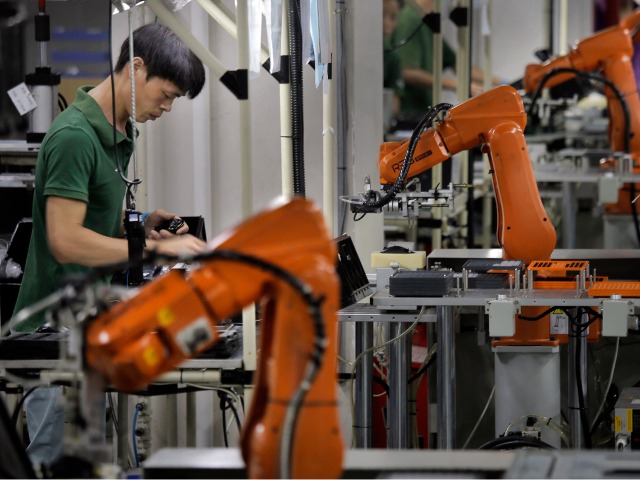U.S. chipmaker Intel on Saturday announced the launch of its Greater Bay Area Innovation Center in the Chinese tech hub of Shenzhen.
The project, a partnership with the government of Shenzhen’s Nanshan district, arrives at a time when tensions between China and the United States are running high over semiconductor technology.
The South China Morning Post (SCMP) described Intel’s announcement as undermining the Biden administration’s chip policies, which include tougher restrictions on exporting products with potential military applications:
Intel is one of multiple US tech giants trying to maintain business in the world’s second-largest economy amid the souring of US-China ties that has seen Washington ramp up chip export restrictions. The tech war has also bolstered demand for electronic components in China, and for chips in particular.
Intel CEO Patrick Gelsinger concluded a low-key trip to China earlier this month, his second to the country in three months.
For the Shenzhen center, Intel will partner with six local tech firms including gadget maker Ugreen and fabless integrated circuit firms Senary Technology Group and Chipsea Technologies, which all signed an agreement with the chip giant during the launch event. The companies will set up multiple joint labs to research areas including low-carbon and energy-saving IT solutions, PC and server chips, and smart transport.

A man works amid orange robot arms at the Rapoo Technology factory in the southern Chinese industrial boomtown of Shenzhen. (Vincent Yu/AP)
China has been attempting to develop its domestic chip industry to reduce its reliance on U.S. imports, an endeavor that will undoubtedly be assisted by Intel’s “innovation center” in Shenzhen.
“The new innovation center comes just two weeks after Intel launched a processor designed to train AI systems that meets U.S. export requirements so that it can be sold to Chinese clients. Many in the country are in dire need of advanced AI chips since the U.S. limits on the sale of semiconductors to China cut off access to Nvidia’s popular A100 and H100 graphic processing units,” the SCMP noted.
Intel and several other tech companies recently dispatched representatives to Washington to discuss the effect of export restrictions on their Chinese business operations. More restrictions could be coming, including a proposed tightening of rules for selling high-end chips to China’s tech giant Huawei — a major customer for the next-generation Intel A.I. chips mentioned by the SCMP.
“Many U.S. chip firms get more than one-fifth of their revenue from China, and industry executives have argued that reducing those sales would cut into profits that they reinvest into research and development,” Reuters reported in July.
Chinese officials in April pressured Intel to make bigger investments in China to “preserve the resilience of the global industrial supply chain” — in other words, to protect China from U.S. export restrictions and sanctions. The new Intel innovation center in Shenzhen was precisely the sort of cooperation Beijing had in mind.
In June, Chinese manufacturer Powerleader Computer System was accused of stealing old Intel technology to produce a new CPU chip. The Chinese company claimed Intel was a voluntary partner in developing the chip, even though the American company’s involvement had never been mentioned before.
In mid-July, Intel CEO Pat Gelsinger visited China in an effort to persuade regulators to approve his company’s takeover bid for Tower Semiconductor Ltd., an acquisition that would give Intel a quick infusion of chip foundry market share.
The far-left New York Times (NYT) reported that an obscure Commerce Department agency called the Bureau of Industry and Security published “139 pages of dense bureaucratic jargon and minute technical detail” in October that amounted to a declaration of chip war on Beijing — an effort to “cripple China’s ability to produce, or even purchase, the highest-end chips,” with an eye toward thwarting China’s march to A.I. weapons.
“If the controls are successful, they could handicap China for a generation; if they fail, they may backfire spectacularly, hastening the very future the United States is trying desperately to avoid,” the NYT predicted, quoting experts who considered the October 7 publication of these chip restrictions to be an event of historic significance comparable to Russia’s Feb. 24 invasion of Ukraine.
It seems likely this chip war agenda did not envision major U.S. companies opening “innovation centers” in partnership with Chinese Communist municipal governments, with the clear goal of making China’s chip industry less dependent on American suppliers.


COMMENTS
Please let us know if you're having issues with commenting.